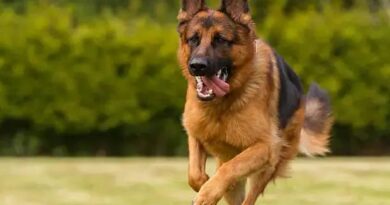O que é Nível de Atividade
What is Activity Level?
The term “Activity Level” refers to the amount of physical and mental engagement a dog requires to maintain its health and happiness. Understanding a dog’s activity level is crucial for pet owners, as it directly influences their overall well-being. Different breeds have varying activity levels, which can range from low to high, depending on their genetic makeup and individual temperament.
Factors Influencing Activity Level
Several factors contribute to a dog’s activity level, including age, breed, health status, and environment. Puppies, for instance, are typically more energetic and require more playtime compared to older dogs. Similarly, active breeds like Border Collies or Labrador Retrievers need more exercise than breeds such as Bulldogs or Basset Hounds, which are generally more laid-back.
Signs of a High Activity Level
Dogs with a high activity level often exhibit behaviors such as excessive barking, digging, or chewing. They may also show signs of restlessness when not engaged in physical activities. These behaviors indicate that the dog needs more stimulation, whether through walks, playtime, or mental challenges like puzzle toys.
Signs of a Low Activity Level
Conversely, dogs with a low activity level may prefer lounging around and show little interest in play. They might gain weight if not monitored closely, leading to health issues such as obesity or joint problems. Recognizing these signs early can help owners adjust their dog’s routine to promote a healthier lifestyle.
Recommended Exercise for Different Activity Levels
For dogs with a high activity level, daily exercise routines should include vigorous activities like running, hiking, or agility training. On the other hand, dogs with a low activity level may benefit from shorter, more frequent walks and gentle play sessions to gradually increase their engagement without overwhelming them.
Understanding Your Dog’s Needs
Every dog is unique, and understanding their specific activity level is essential for tailoring their exercise and playtime. Owners should observe their dog’s behavior and energy levels to determine the right balance of activities. Regular vet check-ups can also provide insights into any health issues that may affect a dog’s activity level.
Adjusting Activity Levels with Age
As dogs age, their activity levels may change significantly. Senior dogs often require less intense exercise but still need regular activity to maintain their health. Adjusting the type and duration of exercise can help keep older dogs fit and engaged without risking injury or exhaustion.
The Role of Mental Stimulation
Mental stimulation is just as important as physical exercise in determining a dog’s activity level. Engaging dogs in training sessions, interactive toys, and socialization with other pets can help satisfy their mental needs. A well-rounded approach that includes both physical and mental activities is key to a happy and healthy dog.
Creating an Activity Plan
To ensure that a dog’s activity level is appropriate, owners should create a structured activity plan. This plan should consider the dog’s breed, age, and health status, incorporating a mix of physical exercise and mental challenges. Regularly updating the plan based on the dog’s changing needs will help maintain their overall well-being.




